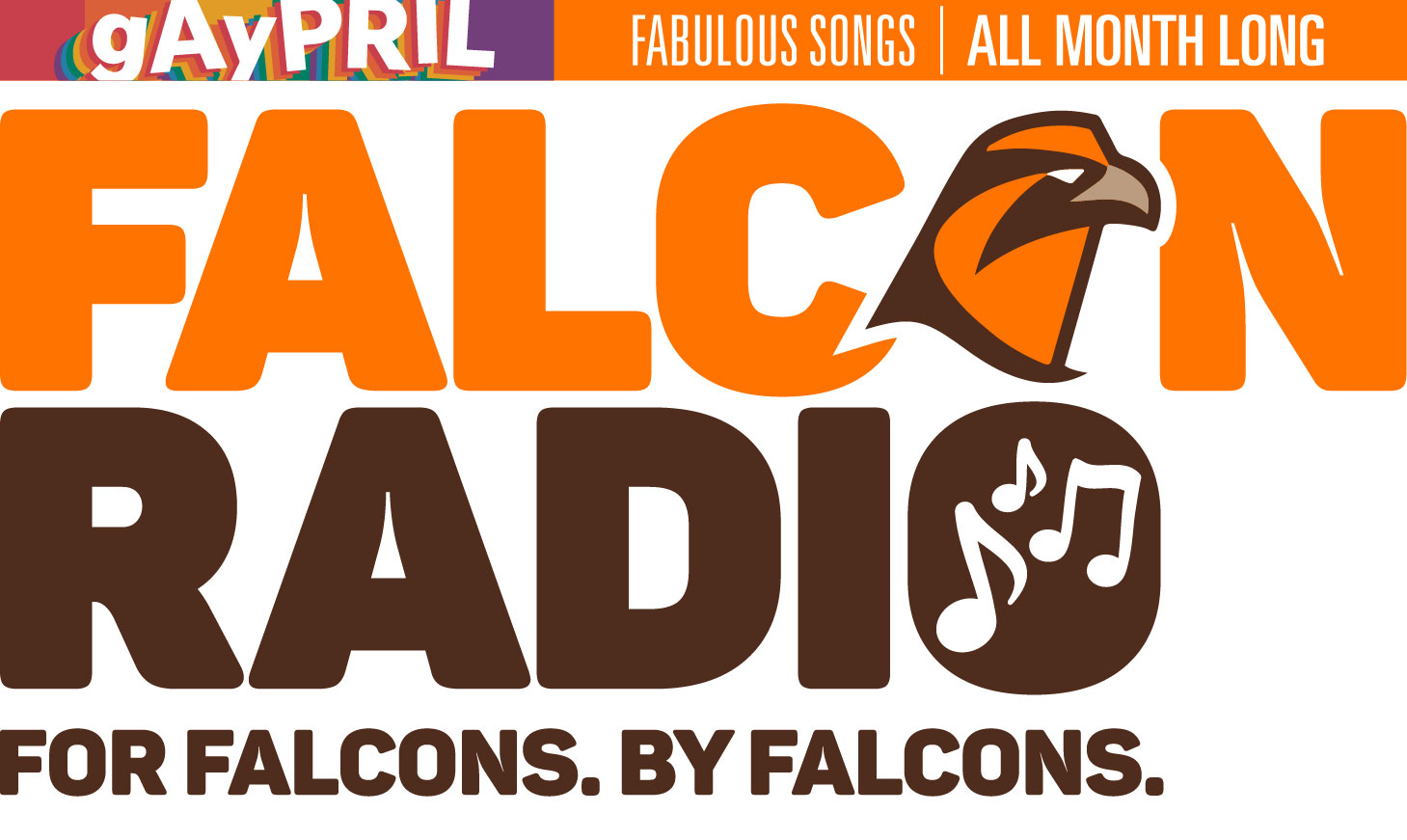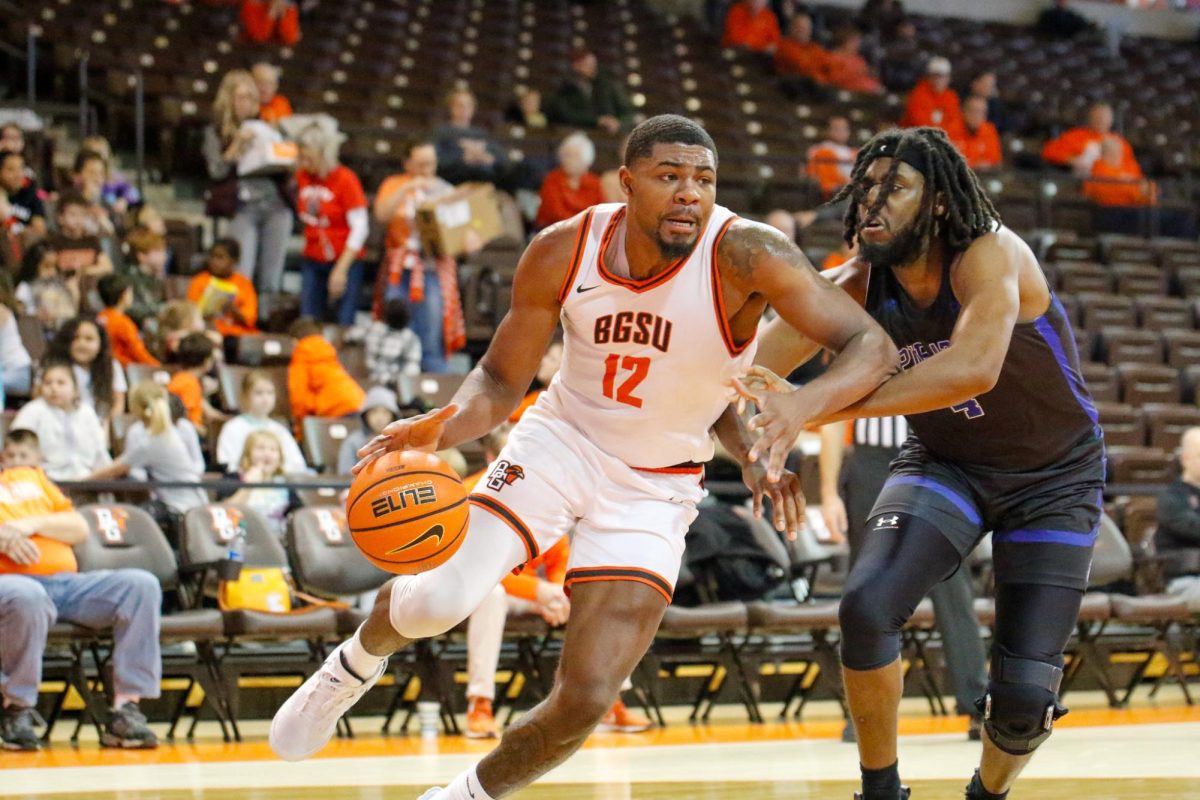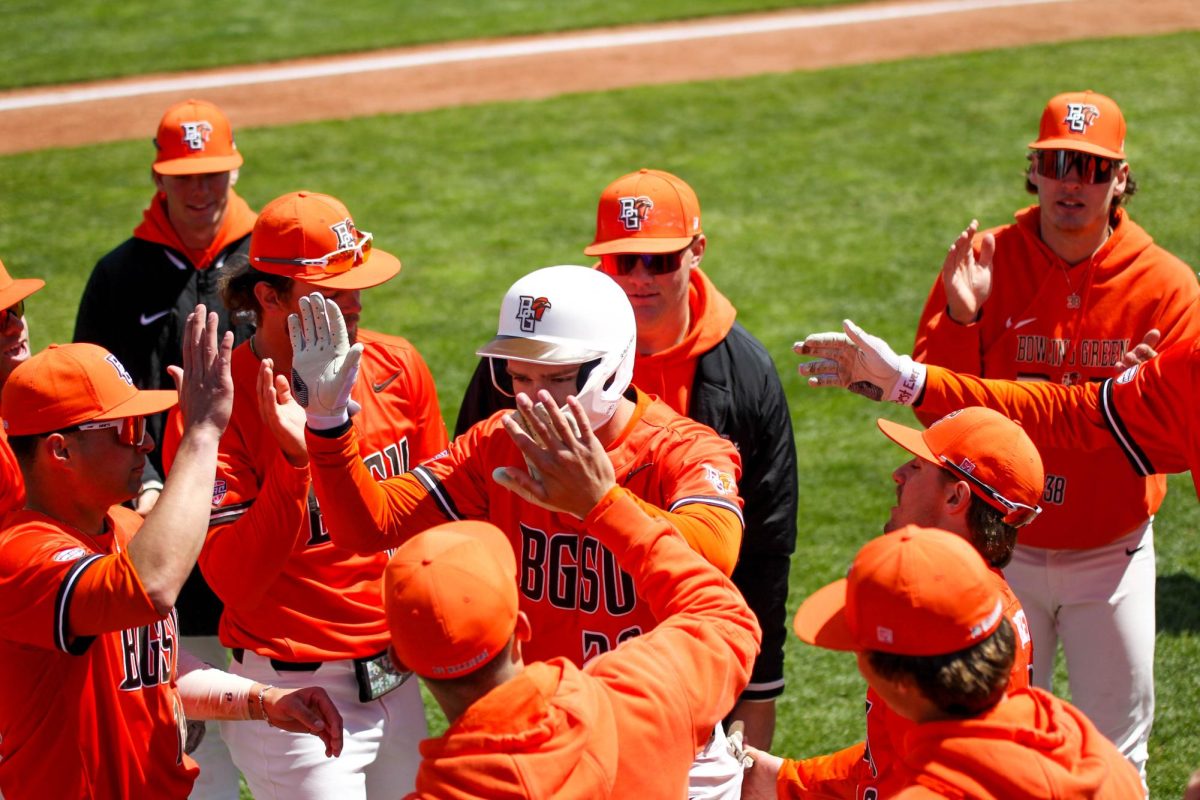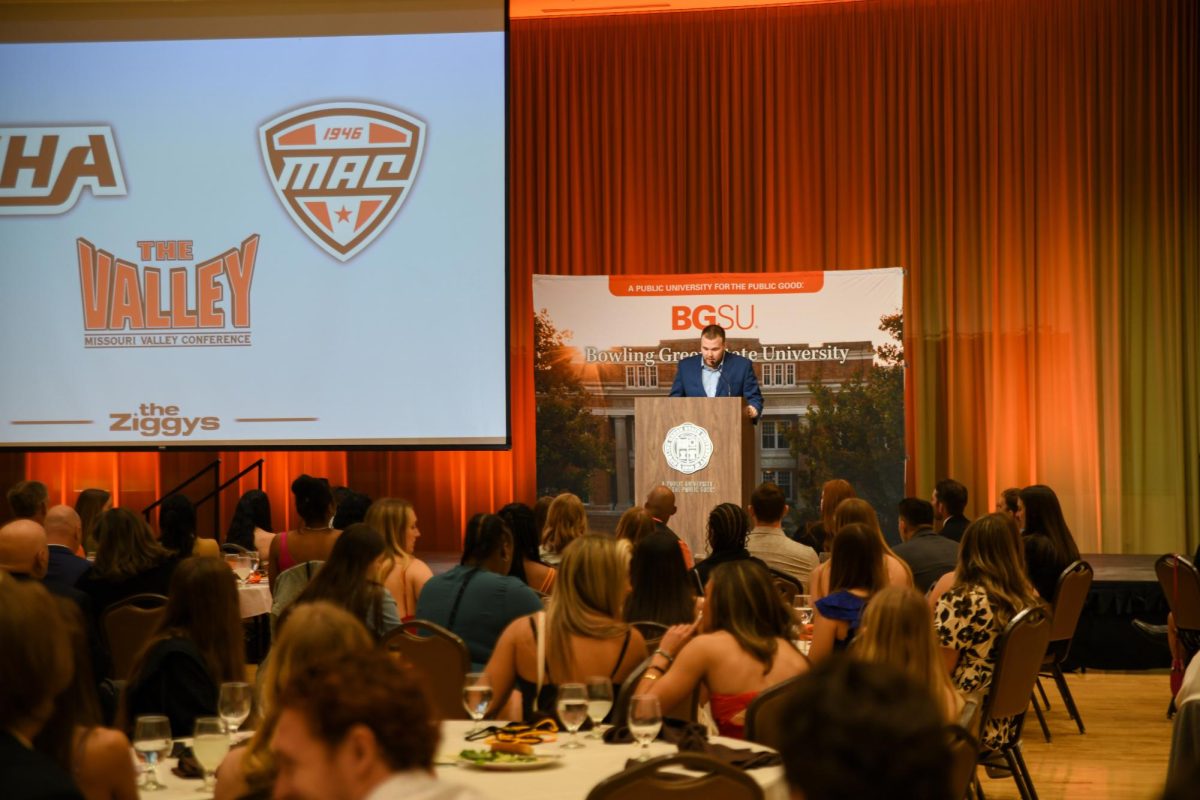Janet Parks remembers the day that started this book.
It was Aug. 23, 1985. There were many articles in the Sentinel-Tribune about BGSU because it was the University’s 75th anniversary.
In an article about Sam Cooper, a previous men’s swim coach, the author writes, ‘However, there were no girls competing in sports at BGSU in Cooper’s day.’
Then Cooper is quoted saying, ‘The women were not the least bit interested in intercollegiate athletics in those days and actually held them in disdain.’
‘It made us mad,’ said Parks, a retired physical education professor and coach at the University, referring to herself and other female university professors and coaches.
Parks had coached female athletes at the University for 15 years prior to that article. She coached tennis from 1967-1976, and golf from 1977-1981.
So Parks, along with some of her colleges, wrote a response that ran in the Sentinel-Tribune two weeks later.
‘However, the omission of any significant mention of the women’s athletic program during the 75-year history of BGSU has prompted us to comment,’ they wrote, later explaining that they wanted to ‘set the record straight.’
The first point they make is that the women’s swim team was competing against Big Ten schools in 1946, which was the same year that Cooper arrived at the university. Other sports women participated in during the same time were basketball, volleyball, synchronized swimming, field hockey, tennis and telegraphic archery.
This response led to one of Parks’ master’s students completing her thesis research on this topic.
Addie Hostetler-Muti wrote her thesis on the history of BGSU women’s sports, beginning in 1910 and ending at the initiation of Title IX in 1972.
Parks is revisiting the thesis work, along with the help of Hostetler-Muti and Ann Bowers, an archivist at Jerome Library.
They want to preserve this history and present it in a fashion that will be easily accessible and useful for future research.
They are writing a photo essay that will have a chapter for eight time periods, ranging from 1900 to 1982, which is when NCAA began to govern both men’s and women’s sports.
The book will be called ‘Forward Falcons,’ which Parks said has a double meaning to the authors. Not only is it the university fight song, whose score will appear in a handwritten version by Wayne Bohrnstedt, the author and composer, at the beginning of the book, but it’s also a tribute to the fact that there were many forward-thinking women at the university.
The chapters begin with an explanation of what is going on in the United States related to women’s sports and then what is happening at the University.
Parks said she has been requesting old rulebooks for context and extra information about the evolution of the sports and how social context has changed about women’s participation.
‘It’s a story of governance and standards,’ she said.
Parks said her involvement with women’s sports since she was in high school has helped the writing process.
‘I can’t imagine writing a history I wasn’t part of,’ she said.
Parks participated in sports at her high school in Chattanooga, and then when she went to the University of Chattanooga in the 1950s, there were no sports. So she and other women made up their own sports program, playing in city leagues with regular schedules, tournaments and trophies.
The book will be illustrated with photographs of the teams and games the women athletes participated in.
Bowers has been collecting these photographs and verifying dates. Photos of the teams every three years or so will be included so that nearly every female athlete will be in the book.
There will also be chapters about each of the women’s sports that reached varsity status at the university. Information on the coaches, basic facts and photos of the teams will be included.
The coaches at the University were women physical educators who did not receive any financial support or a reduced course load.
‘The program was offered for the benefit of the student/athletes and, although the coaches received a great deal of gratification from the personal and athletic successes of these students, they realized no material gains,’ says the letter in the Sentinel-Tribune.
Comparisons between the evolution of men’s and women’s sports will also be made. Men’s sports started with male students organizing the games in 1852, Parks said. There weren’t standards until 1906. Women’s sports began with physical educators, so there always were rules.
In 1971 the Association for Intercollegiate Athletics for Women was created and served as the first individual organization with policy-making authority to govern women’s intercollegiate sports.
Then in 1972 Title IX was created. Parks said there was lots of pressure surrounding Title IX, especially concerning football and other men’s sports.
‘Title IX hasn’t hurt anybody,’ Parks said.
Female athletes participated in AIAW events for another 10 years at the University.
Parks said the AIAW was the largest sports governing body in the US with over 960 member schools and 99,000 female athletes. There were 1,200 leadership positions filled almost entirely by women.
The NCAA existed at this time and was the governing body for male sports. NCAA directors decided they wanted to govern women’s sports so there could be gender equality.
Parks remembers attending many meetings at BGSU discussing the governing options. The NCAA announced that if colleges and universities already belonged to the NCAA for men’s sports, the women’s sports would be permitted to join for free.
This forced the AIAW to shut down in the summer of 1982.
One of the changes Parks remembers is that the NCAA was focused less on athletes’ education than the AIAW was. Another is that many of the leadership positions that were held by women in the AIAW were dropped. Women who held athletic director positions at universities were dropped to assistant positions to the male athletic director.
Along with providing information about the evolution of women’s sports across the country and specifically at BGSU, Parks wants this book to clear up two myths.
There were female physical educators who wanted to create opportunities for highly skilled female athletes, and that the experience of women of color was different, Parks said. Historically black colleges and universities provided scholarships for female athletes beginning in 1929, and became established in some sports, such as track and field, providing many Olympic athletes.
But overall, Parks is looking for something much less specific.
‘We want to validate those athletes and coaches ‘hellip; We want the University to recognize we have a rich history of women’s sports here at the University,’ she said.
That was the goal when Parks and 11 others wrote the letter to the Sentinel-Tribune in 1985.
‘Those of us who participated in women’s athletics in the 1940s either as coaches or competitors resent the implication that we do not exist. Those of us who coached in the 1950s, 1960s, and 1970s share this resentment. We are both surprised and disappointed that our efforts appear to have gone unnoticed and unappreciated,’ they wrote.
The writers even mention that a history of the BGSU athletic program would be a nice addition. They hoped the Sentinel-Tribune journalists would do this, but that hasn’t happened. So that led to Hostetler-Muti’s thesis project and its current revival.

















